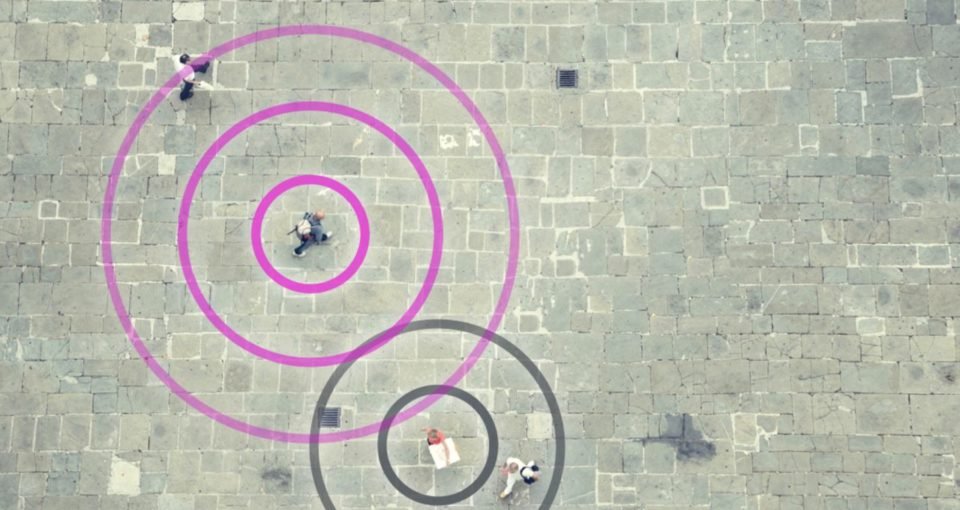Outdoors App Crosses into Information of Things
Will Ross, May 1, 2017

Found among the growth of rock show tech conferences and outlandish music festivals is one brand has managed to maintain a reputation for intimacy in the now specialised field of event engagement. Having just run completed its third edition, Pirate Summit combines a Burning Man hedonism as “Europe’s craziest startup conference” with serious tech engagement in Cologne, Germany.
This year, the looting theme provided a compelling theme and a rallying point for 65 venture funds from 20 countries. As a key symbol for the event, an animated chunk of wood leapt from the main stage, a plank for startup founders to pitch in the pursuit of bullion to this crowd spouting capital. One such company — Zurich-based Uepaa — made it to the summit this year, walking the plank to point out its new horizon in peer-to-peer connectivity in an intimate setting-on-sea.
Starting point
Originally a spin-out from Swiss Federal Institute of Technology (ETH Zürich), Uepaa first found its calling up a mountain with a SOS-alert app, Uepaa — 24h Safety. By running the app on their phones, users are able to alert for help from anywhere in world and talk in-person to nearby professional emergency services. 24h Safety essentially creates a mesh network using bluetooth and GPS, so that users who are running the app enable their phones to act as satellites for other nearby users, relaying messages to the nearest network tower and onto the main communication hub.
Any alerts can also passed to personal contacts who will subsequently gain access to the user’s location data. Premium users get access to Accident Detection, a service that makes regular checks on the user’s progress and automatically notifies for help if activity becomes unusual, also requesting aid to users in the vacinity. With a clear prerogative to improve mountain safety, the genesis of Uepaa proved some complex technocogy in demanding environments, not least where battery life is at a premium.
A parallel chapter
From its Zürich headquarters, Uepaa are now looking at how they can broaden their learnings from mountain safety, condensing its value at lower altitudes among the so-called internet of things. As new hardware verticals begin to implement software and fundamental bluetooth and WiFi capacity, the challenge of managing the entire ecosystem becomes the software play. It’s this opportunity that formed the backbone of Uepaa’s pitching at Pirate Summit.
Uepaa’s solution is to embed proximity technology into the operating systems of devices, to enable conversation across set parameters.The major advantage of creating relationships involves battery life — unofficial testing showed that battery life was effected by 0.5–1.5 percent per hour. By relating only to ‘relevant’ devices, no remote server is needed to place or index devices with a geographical scope based on the end-users’s absolute location, then communicate this to the recipient device. Uepaa’s central feature, Proximity Ranging, serves this function.
Proximity Ranging serves to context to discovery through lists and notifications, giving users an idea of who is around them based on proximity strength. Though peer-to-peer networking is still in its early stages when it comes, limited by the unreliable signal strength issued by different hardware, environments and surfaces, Uepaa are making steps to providing relative distance, say where one another device is 10ft away, and another at several hundred feet. Other limitations involve foreground versus background ranging. Proximity ranging only works in the foreground and not all Android devies are able to be ranged by other peer devices, and Android phones generally have a reduced rate of proximity strength when compared with iOS.
Equipped with Uepaa’s SDK, p2pkit, developers can explore the technology’s potential and integrate proximity-based features into their apps. With the integration, apps are able to use device-level functions to communicate with other Android, iOS and OSX devices.
Uepaa certainly aren’t alone in their quest to connect devices and as the end-user comes to terms with pre-meditated intelligence of devices, the spoils could be significant. Right now, it’s hard to gauge the immediate benefit of p2p technology, where devices are communicating with each other to create solutions that humans can’t foresee.